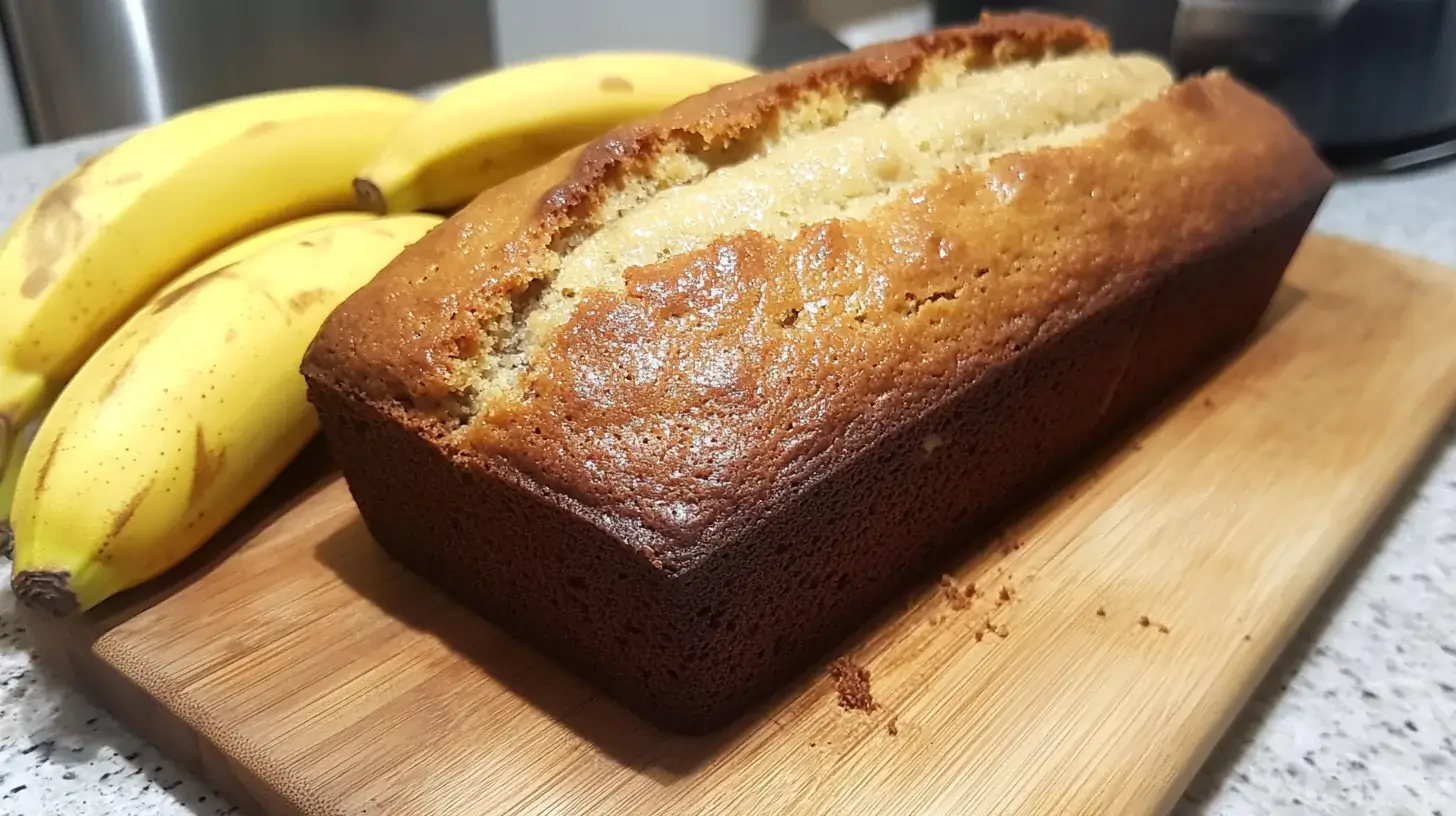What Is the Formula for Banana Bread? A Complete Guide
Introduction
Banana bread is a timeless classic, loved for its rich flavor, moist texture, and incredible versatility. Whether you’re a seasoned baker or a novice in the kitchen, crafting the perfect loaf becomes effortless when you understand the simple formula behind this beloved treat. With just a few ingredients balanced in the right ratios, you can create a banana bread that’s not only foolproof but also endlessly customizable.
The beauty of the banana bread formula lies in its adaptability. From health-conscious adjustments to indulgent add-ins, this formula serves as the foundation for countless variations. By grasping the basic principles, you can confidently bake a loaf that suits any occasion, dietary preference, or flavor profile.
For more baking inspiration, explore 4 Ingredient Banana Bread for a minimalist take, or delve into Artisan Italian Bread to master rustic baking techniques.
Let’s uncover the secrets of the banana bread formula and discover how it can make your baking simpler, more reliable, and incredibly delicious!
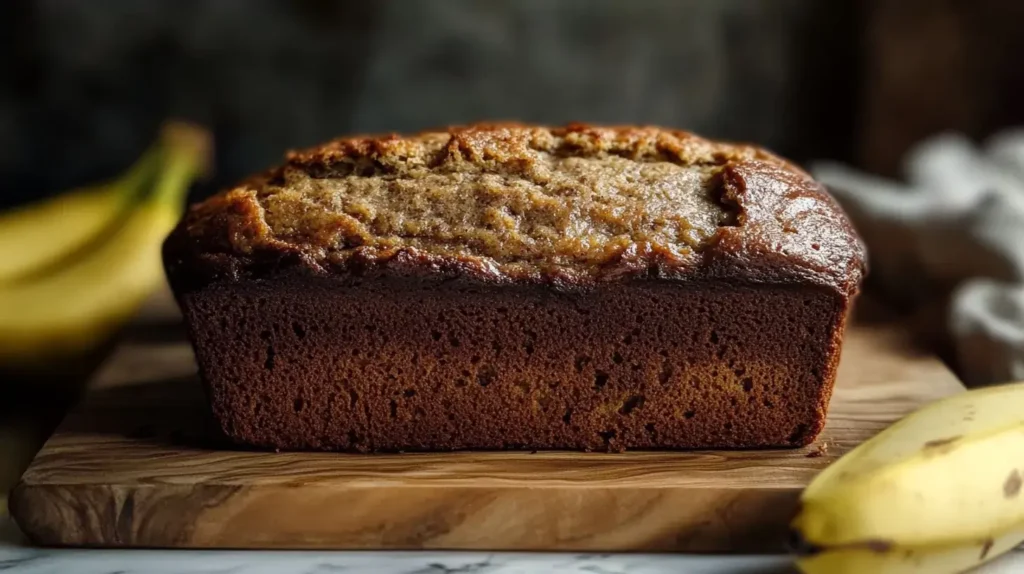
Table of contents
Understanding the Formula for Banana Bread
The secret to perfect banana bread lies in its formula—a reliable ratio of ingredients that ensures consistent results every time. By understanding these ratios, you can confidently adjust recipes to suit your taste or dietary needs while maintaining the bread’s signature texture and flavor.
The Basic Ratios for Perfect Banana Bread
The formula for banana bread typically follows this simple structure:
- 3 parts flour: Provides the structure and base for the bread.
- 2 parts liquid (including mashed bananas): Adds moisture and binds the ingredients together.
- 1 part fat: Enhances flavor and creates a tender crumb.
- 1 part sugar: Balances the sweetness of the bananas and adds depth to the flavor.
- Leavening agents (baking soda or powder): Ensure the bread rises properly.
How the Formula Balances Flavor, Texture, and Structure
- Flavor: The natural sweetness of ripe bananas combined with sugar creates a balanced flavor profile.
- Texture: The ratio of wet to dry ingredients ensures the bread stays moist without becoming dense.
- Structure: Flour and eggs work together to provide stability, while leavening agents create a light, airy crumb.
Common Adjustments to the Banana Bread Formula
- Healthier Options: Replace all-purpose flour with whole wheat flour or almond flour for added nutrients.
- Less Sugar: Reduce the sugar or replace it with honey or maple syrup for a more natural sweetness.
- Dairy-Free or Vegan Variations: Use plant-based milk and a flaxseed egg substitute to adapt the formula for dietary preferences.
By mastering this formula, you can easily customize your banana bread recipe while achieving consistently delicious results.
Key Ingredients in the Banana Bread Formula
The magic of banana bread starts with a few simple ingredients, each playing a crucial role in creating its delicious flavor and soft texture. Here’s a closer look at these essential components:
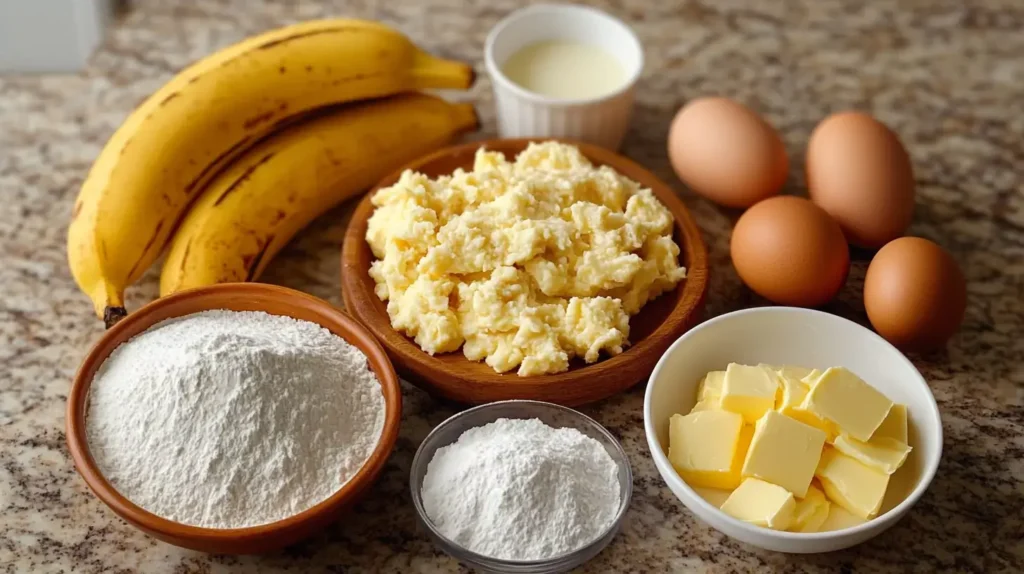
Bananas: The Essential Base of the Recipe
- Why Bananas Matter: Bananas provide natural sweetness, moisture, and a soft texture, making them the heart of the formula. Overripe bananas are ideal, as their high sugar content enhances the bread’s flavor.
- Pro Tip: If your bananas aren’t ripe enough, you can speed up the process by baking them in their peels at 300°F (150°C) for 10–15 minutes.
Flour, Sugar, and Eggs: The Building Blocks
- Flour: All-purpose flour is the go-to choice for banana bread, providing the structure needed to hold the loaf together.
- Sugar: Balances the natural sweetness of bananas. Brown sugar adds a hint of caramel, while white sugar gives a cleaner, sweeter taste.
- Eggs: Bind the ingredients and contribute to the bread’s moisture and stability.
Substitutes for 1 Cup of Sugar in Banana Bread
If you’re looking to cut back on sugar or try something different, consider these alternatives:
- Honey or Maple Syrup: These natural sweeteners add flavor and moisture but may require reducing the liquid in the recipe slightly.
- Coconut Sugar: A less processed option that provides a mild caramel taste.
- Applesauce: A great choice for reducing sugar and adding extra moisture, but be sure to adjust the liquid content accordingly.
Each of these ingredients works in harmony to create a balanced banana bread. Experimenting with substitutions allows you to customize the recipe to your liking without losing the integrity of the formula.
Troubleshooting and Tips for Banana Bread Success
Even with a reliable formula, banana bread can sometimes go awry. Here are some common challenges and tips to ensure every loaf turns out perfectly.
Avoiding the Number One Mistake in Banana Bread Baking
- Overmixing the Batter: The most common mistake is overmixing, which can develop too much gluten in the flour, leading to a dense and tough loaf.
- Solution: Mix the wet and dry ingredients just until combined, leaving some lumps in the batter.
How to Adjust the Formula for Healthier Banana Bread
- Use Whole Wheat Flour: Replace all-purpose flour with whole wheat flour for added fiber and nutrients.
- Swap Sugar for Alternatives: Use natural sweeteners like honey, maple syrup, or mashed dates to reduce refined sugar content.
- Reduce Fat: Substitute half the butter or oil with unsweetened applesauce to cut down on calories while keeping the bread moist.
For more tips on bringing out the natural sweetness of bananas, explore What Enhances the Flavor of Bananas: Tips for Maximum Sweetness to ensure your banana bread is as flavorful as possible.
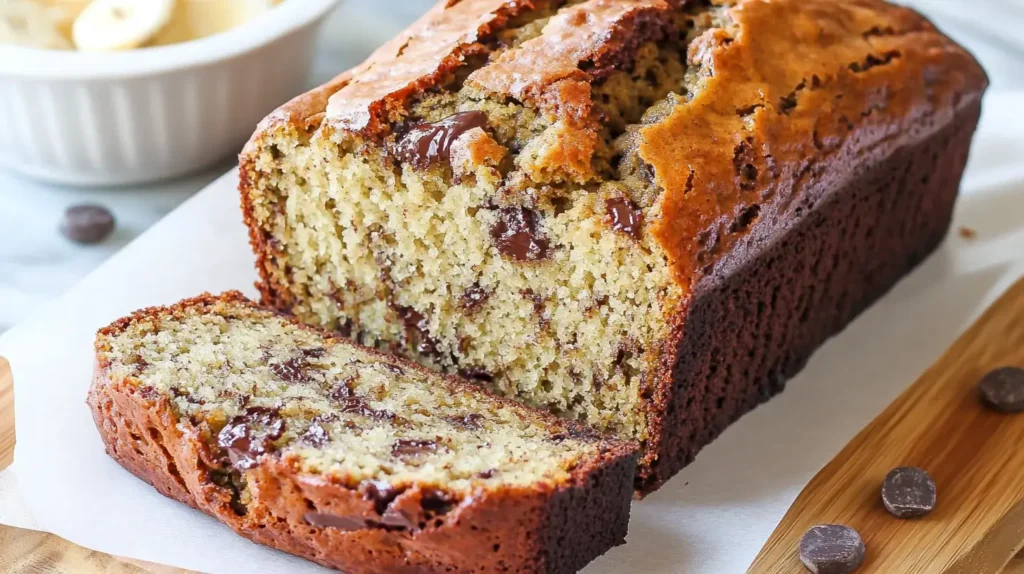
Creative Add-Ins to Elevate the Classic Recipe
- Nuts and Seeds: Add chopped walnuts, pecans, or sunflower seeds for crunch and extra protein.
- Chocolate Chips: For a touch of indulgence, fold in dark chocolate chips.
- Spices: Enhance the flavor with cinnamon, nutmeg, or even a pinch of ginger.
These tips not only help troubleshoot potential issues but also allow you to put your own spin on the classic banana bread formula.
Applying the Formula Beyond Banana Bread
The beauty of the banana bread formula lies in its adaptability. Once you’ve mastered the basics, you can use the same principles to create other delicious baked goods or explore different types of bread.
Adapting the Formula for Different Types of Bread
- Muffins: Transform banana bread batter into muffins by dividing it into a muffin tin. Adjust the baking time to 20–25 minutes.
- Pancakes: Use the batter to make banana bread-inspired pancakes by thinning it slightly with milk. Cook on a griddle until golden for a delightful breakfast treat. For more pancake inspiration, try our Cracker Barrel Pancake Recipe: Fluffy Perfection Every Time and pair it with your banana bread pancakes for a variety of flavors.
- Cake Loaves: Add frosting or glaze to the bread to turn it into a dessert loaf suitable for celebrations.
What Is the Formula for Bread in General?
For standard bread, the formula is simpler but equally versatile:
- 5 parts flour
- 3 parts liquid
- 1 part fat (optional)
- Leavening agent: Typically yeast for traditional bread or baking powder/soda for quick breads.
This ratio allows you to experiment with a variety of bread types, from rustic sourdough to fluffy dinner rolls.
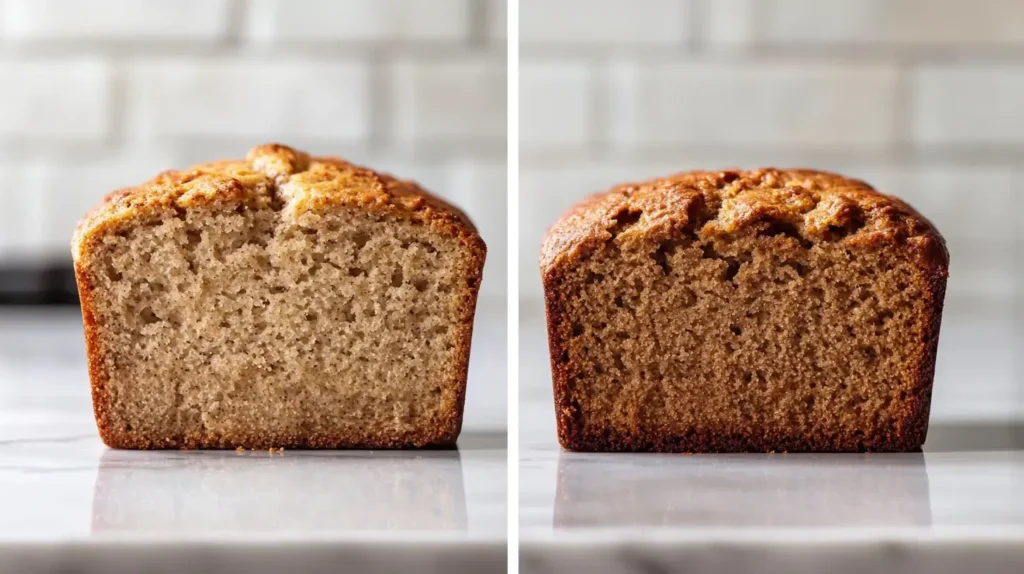
Explore More with Artisan Italian Bread
If you’re inspired to expand your bread-baking repertoire, try something different like Artisan Italian Bread. This traditional recipe focuses on simple ingredients and time-tested techniques, resulting in a loaf with a crispy crust and soft interior.
Understanding the banana bread formula can open the door to endless baking possibilities. With just a few tweaks, you can create a variety of sweet and savory breads that suit any occasion.
Frequently Asked Questions
What Is the Formula for Bread?
In baking, the term ‘finding bread’ often refers to identifying the right ratio of ingredients for a specific bread type. For example, when making banana bread, the formula is 3 parts flour, 2 parts liquid (including mashed bananas), 1 part fat, and 1 part sugar. Meanwhile, for traditional yeast breads, the ratio shifts to 5 parts flour to 3 parts liquid, with yeast or a sourdough starter as the leavening agent. As a result, these formulas provide a solid foundation, allowing you to experiment confidently with different bread styles and flavors.
What Is the Number One Mistake Made When Making Banana Bread?
The most common mistake is overmixing the batter, which can result in a dense and tough loaf. Overmixing develops too much gluten in the flour, which negatively affects the bread’s texture. To avoid this, gently fold the wet and dry ingredients together until just combined—lumps in the batter are perfectly fine and even preferred
What Is the Formula for Finding Bread?
The “formula for finding bread” typically refers to determining the correct ratios of ingredients for a specific bread type. For banana bread, the formula is 3 parts flour, 2 parts liquid (including mashed bananas), 1 part fat, and 1 part sugar. For yeast-based breads, it’s generally 5 parts flour to 3 parts liquid with yeast or a sourdough starter as the leavening agent.
What Is a Substitute for 1 Cup of Sugar in Banana Bread?
If you’re looking to reduce sugar or experiment with alternatives, here are some great substitutes for 1 cup of sugar in banana bread:
Honey or Maple Syrup: Use ¾ cup of honey or maple syrup and reduce the liquid in the recipe slightly.
Coconut Sugar: Swap sugar for coconut sugar in a 1:1 ratio for a mild caramel flavor.
Applesauce: Use ½ cup of unsweetened applesauce, but reduce the liquid by about 2 tablespoons to maintain the correct consistency.
These substitutes can make your banana bread healthier or more flavorful, depending on your preference.
Conclusion
The formula for banana bread is a simple yet powerful tool that makes baking approachable and fun. By understanding the basic ratio of 3 parts flour, 2 parts liquid, 1 part fat, and 1 part sugar, you can create a loaf that’s moist, flavorful, and perfectly balanced. This foundation allows for endless possibilities, from healthy tweaks like using applesauce instead of sugar to indulgent additions like chocolate chips and nuts.
Whether you stick to the classic recipe or experiment with new flavors and techniques, the banana bread formula ensures consistent results every time. It’s a testament to the simplicity and beauty of baking—a process that turns humble ingredients into something extraordinary.
For more ideas to elevate your baking, try a rustic loaf of Artisan Italian Bread or simplify your process with the 4 Ingredient Banana Bread. With these guides, you’re ready to explore the joy of breadmaking at every level.
Baking banana bread isn’t just about following a recipe; it’s about creating something uniquely yours. Start with the formula, and let your imagination guide you to your next delicious creation!

